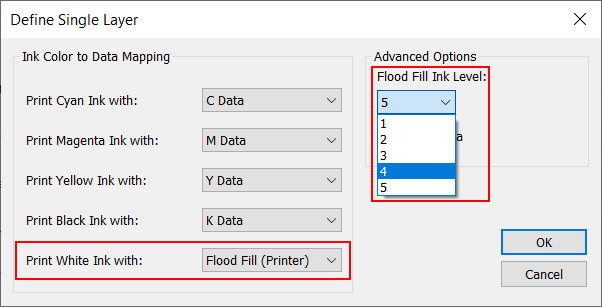

This section shows you how to add white to a print job. You can print a simple job (White flood fill) without data preparation, or more complex jobs using Spot data. See Create Spot Data in Photoshop or Create Spot Data in Adobe Illustrator for more information.
The Quality-Layered print mode is used to print white ink applications, however other print modes can be used as long as the ONYX media profile (media model) has been made with a CMYKSS ink configuration with spot colors defined.
Obtain and import an ONYX media profile (media model) that is set to Quality-Layered print mode. Sample Media profiles for white and all other inks are available for download from our website: https://graphiplaza.cpp.canon.
There are three data layers available that allow you to determine the area the white ink will cover and also how it will appear (or not appear) in relation to other colors, depending on the layer it is placed in.
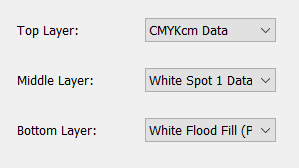
The bottom layer is printed first (if it is not empty) and the top layer is printed last (if it is not empty).
Layers can be defined at any of the following locations:
Defined in the media when the media is created
Selected in a Quick Set
In the printer settings of a job in the RIP Queue
Optional - not required if the method for printing white was correctly specified in the ONYX media profile or quickset.
If the desired layer definitions have not been predefined in the ONYX media profile or Quickset, select "Hold for Operator" prior to submitting the job to be printed, so that the job will not automatically be sent to the printer.
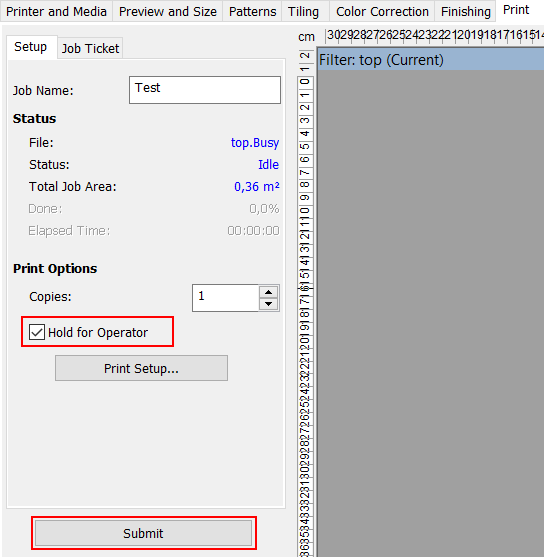 Hold for Operator
Hold for OperatorProcedure
Select the job in the RIP Queue - right click the job and select [edit] - [Print settings].
Check if the print mode is set to Quality Layered.
Click on the button [Define Layers]
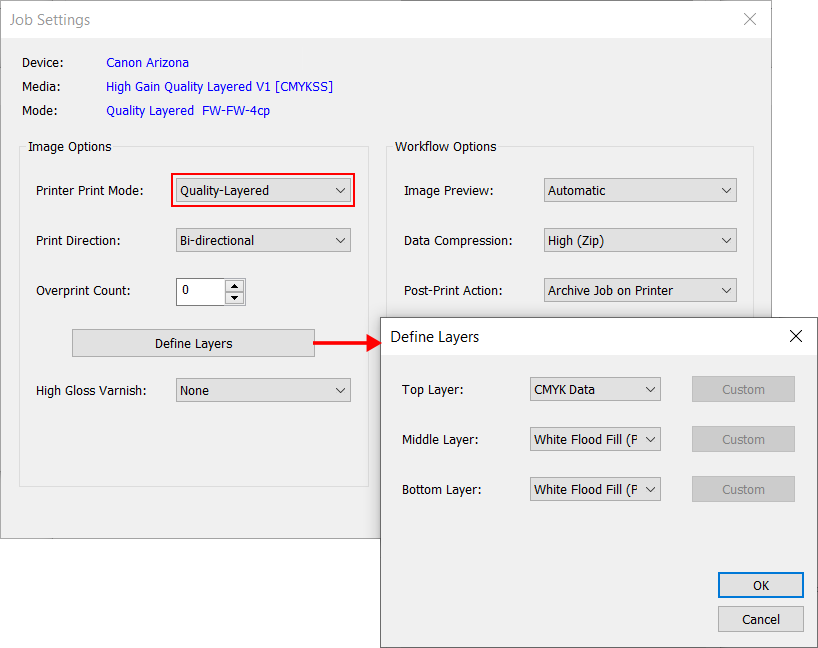
Each layer can be defined with one of the following choices:
CMYK Data - CMYK image data
White Spot Data – White ink will be printed where Spot1 data is present. Choose this option when you have spot data defined in your print job (created with the Spot Layer Tool see: Create Spot Data with the Spot Layer Tool or by additional processing via Adobe Photoshop, see Create Spot Data in Photoshop or Adobe Illustrator see Create Spot Data in Adobe Illustrator.
White Flood Fil - A white layer of the size of the whole image (bounding box) will be printed, using the largest ink drop level.
Custom - Custom allows customer ink color to data mapping and advanced options for the selecting the printer flood level or mirroring the data.
Empty
Make the selection for every layer and click [OK].
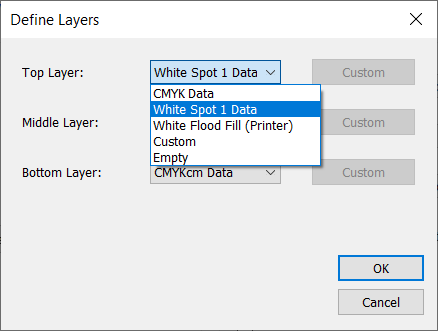
Choose [White Flood Fill] when you want to print a simple print job. It allows you to print a white rectangle (bounding box of the image) as an underlay or overlay without data preparation. The white layer is embedded in the print job.
Choose [White Spot 1 Data] when you want to print a part of the image in white. The Spot 1 data must be available in your print job.
The bottom layer is printed first and the top layer is printed last. Transparent media will be viewed from the side that does not have ink on it. That means that the bottom layer will be the most visible layer. For opaque media the top layer will be the most visible one.
Submit the print job and send the job to the printer.
When you have selected Custom for a layer, you can select additional options.

There are five color channels: C,M,Y,K and W, and six data planes: C,M,Y,K, Spot 1, and Spot 2 data. Each color channel can be configured to print: nothing, any one of the six data planes, or have the printer generate flood data with a chosen drop level.

You can determine the density of the white ink by altering the drop size. The layer setup is defined in the media model but can be modified as a job printer setting within the ONYX software.
